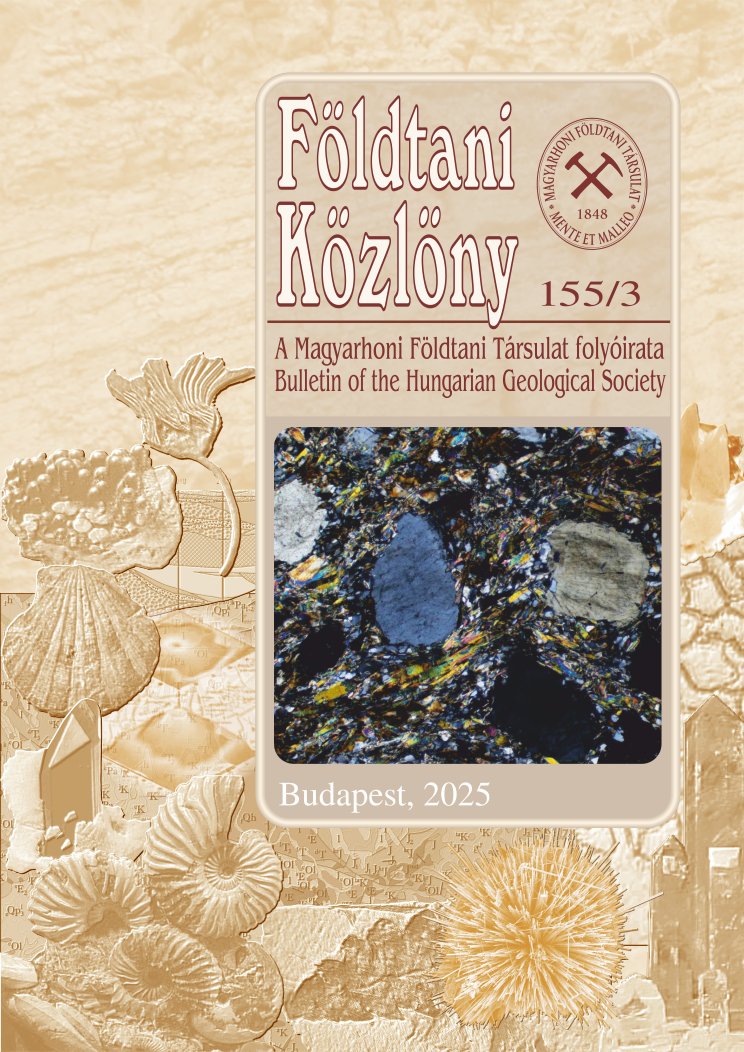The Ínség-kő: Danube bedrock geology at Gellért Hill, Budapest
Abstract
Low water levels of the Danube during the late autumn of 2011 exposed rocks in the riverbed along the Gellért Hill
(Budapest, Hungary). In contrary to common belief, these rocks, called the Ínség-kő, are not Triassic dolomites, but silicified
Eocene sandstones. Similar formations are known from the Gellért Hill. The significant secondary porosity of the sandstones
comes from the almost complete dissolution of the carbonate material of the original marl clasts. Silica cementation preceded
the dissolution, and/or the two processes were coeval. The fault pattern in these rocks fits earlier observations on the Gellért
Hill, where east-west trending faults are crosscut by a younger, north-west–south-east striking dextral-normal fault system.











